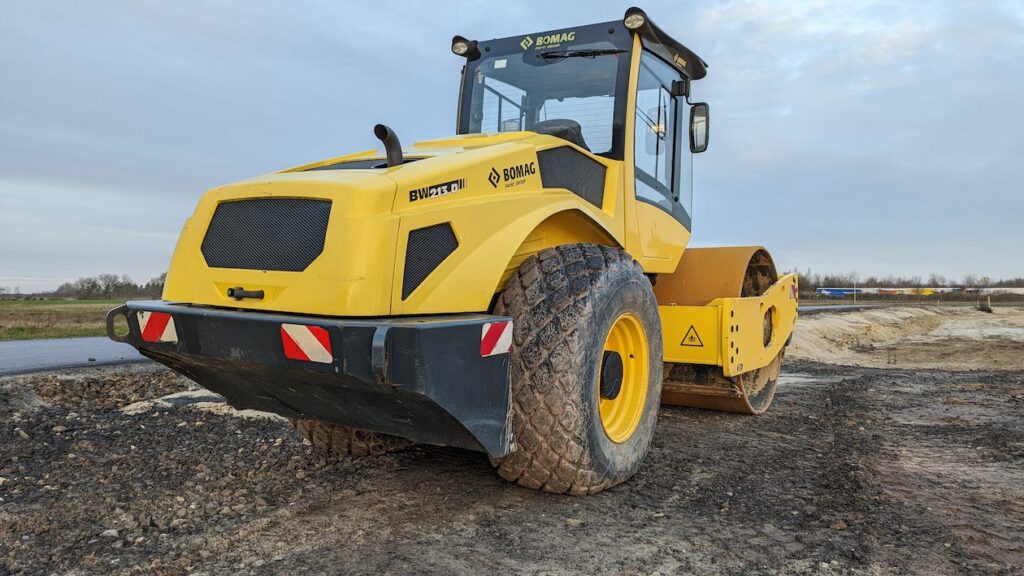In the ever-evolving landscape of construction management, technological advancements have emerged as a driving force behind efficiency, productivity, and sustainability. From groundbreaking innovations in building materials to sophisticated project management software, technology has revolutionised how construction projects are planned, executed, and monitored. In this blog, we’ll delve into the pivotal role of technology in modern construction management, exploring its impact on various aspects of the construction process and how it’s reshaping the industry for the better.

Advancements in Building Information Modeling (BIM)
Building Information Modeling (BIM) stands as a transformative force in modern construction management, offering a comprehensive digital approach to project planning and execution. BIM software empowers architects, engineers, and construction professionals to transcend traditional 2D drawings and embrace a dynamic, three-dimensional representation of their projects. This multidimensional modelling not only provides a vivid visualisation of the final structure but also serves as a centralised hub for collaboration and decision-making throughout the project lifecycle.
One of the primary advantages of BIM is its capacity to foster collaborative design processes among diverse project stakeholders. By creating a shared digital environment, BIM facilitates seamless communication and coordination between architects, engineers, contractors, and clients. Through real-time collaboration features, team members can contribute their expertise, iterate on designs, and resolve conflicts proactively, resulting in more cohesive and well-coordinated project outcomes.
Moreover, BIM enables clash detection, a critical feature that helps identify potential conflicts or inconsistencies in the building design before construction begins. By simulating the integration of various building systems, such as structural, mechanical, electrical, and plumbing components, BIM software can detect clashes or interference points that might arise during construction. Addressing these conflicts early in the planning phase helps minimise costly rework and delays during construction, ultimately enhancing project efficiency and reducing risks.
Beyond clash detection, BIM facilitates the simulation of construction processes, allowing project teams to analyse construction sequences, logistics, and resource utilisation in a virtual environment. Through 4D (time-based) and even 5D (cost-based) BIM modelling, stakeholders can visualise the construction timeline and associated costs, enabling more accurate scheduling, budgeting, and resource allocation. This holistic view of the project lifecycle empowers decision-makers to optimise designs for both cost and efficiency, ultimately leading to more cost-effective and timely project delivery.
Furthermore, by integrating BIM into project workflows, construction managers can streamline communication and information exchange among stakeholders. BIM platforms serve as centralised repositories for project data, documents, and specifications, ensuring that all team members have access to the most up-to-date information. Whether it’s sharing design revisions, tracking project milestones, or managing RFIs (Requests for Information), BIM facilitates transparent and efficient communication across the entire project team, fostering collaboration and alignment towards common project goals.
Enhanced Project Management with Construction Software
The advent of construction management software marks a significant departure from traditional manual methods, ushering in an era of unprecedented efficiency and productivity. No longer constrained by cumbersome paper-based processes, project teams now have access to sophisticated software solutions that streamline every aspect of project planning, scheduling, and tracking.
Central to these software solutions are dynamic tools such as Gantt charts, which provide project managers with a visual roadmap of project tasks and milestones. By breaking down complex projects into manageable tasks and assigning dependencies, Gantt charts offer a clear overview of project timelines and critical path activities. This enables project managers to proactively identify potential delays or bottlenecks and make informed decisions to keep the project on track.
Construction management software facilitates precise resource allocation, ensuring that labour, materials, and equipment are deployed efficiently to meet project deadlines and budget constraints. Through intuitive dashboards and analytics features, project managers gain real-time insights into resource utilisation, enabling them to optimise allocations, allocate resources where they are most needed, and avoid overruns or shortages.
In addition to project planning and resource management, construction management software enables comprehensive progress monitoring throughout the project lifecycle. By integrating with project management tools, such as time tracking systems and task management platforms, these solutions provide up-to-date information on project status, completion rates, and performance metrics. This visibility allows project managers to track progress against predefined targets, identify deviations from the plan, and take corrective actions as needed to ensure project success.
The transition to cloud-based construction management software further enhances collaboration and accessibility for project teams. By storing project data and documents in the cloud, teams can access information from anywhere with an internet connection, breaking down geographical barriers and enabling seamless collaboration across distributed teams. Cloud-based platforms also facilitate version control and document management, ensuring that all team members have access to the latest project information and eliminating the risk of outdated or conflicting data.
Furthermore, the proliferation of mobile applications extends the benefits of construction management software to field workers, empowering them to report issues, submit updates, and access vital project information on the go. Equipped with smartphones or tablets, field workers can capture photos, record observations, and communicate with the project team in real-time, facilitating rapid response to emerging issues and enhancing overall project transparency and accountability.
Harnessing the Power of Drones and Robotics
Drones and robotics are rapidly transforming construction site operations, offering unparalleled capabilities for data collection, site surveying, and progress monitoring. Equipped with high-resolution cameras and sensors, drones can capture aerial imagery, map topography, and monitor construction progress with precision. This data can be integrated into BIM platforms, enabling accurate as-built documentation and facilitating construction quality control. Similarly, robotics technologies, such as autonomous vehicles and robotic arms, are automating repetitive tasks like excavation, bricklaying, and welding, reducing labour costs, and enhancing safety on-site.
IoT and Smart Construction
The Internet of Things (IoT) represents a groundbreaking leap forward in the realm of construction, heralding a transformative era of smart construction practices. At its core, IoT harnesses the power of interconnected devices and sensors to imbue construction projects with unprecedented levels of intelligence and responsiveness. Through the strategic deployment of IoT technology, construction managers can usher in a new standard of efficiency, sustainability, and safety across all phases of the building lifecycle.

At the heart of IoT-enabled construction lies the integration of smart sensors into building materials themselves. These sensors, seamlessly embedded within concrete, steel, and other construction components, serve as vigilant sentinels, continuously monitoring key parameters such as temperature, humidity, and structural integrity. By capturing real-time data on environmental conditions and structural performance, these sensors provide invaluable insights into the health and stability of the building. Crucially, they also sound the alarm at the first sign of potential defects or maintenance needs, empowering construction teams to preemptively address issues before they escalate into costly problems. Whether detecting subtle shifts in temperature that could indicate moisture intrusion or flagging deviations in structural integrity, these IoT-enabled sensors serve as early warning systems, helping to safeguard the integrity and longevity of the built environment.
Moreover, IoT technology extends its transformative reach beyond mere structural monitoring, encompassing the entire spectrum of construction equipment and machinery. By outfitting equipment with IoT-enabled sensors and connectivity, construction managers gain unprecedented visibility into usage patterns, performance metrics, and maintenance requirements. This wealth of data enables predictive maintenance strategies, allowing teams to anticipate equipment failures before they occur and schedule maintenance activities proactively, minimising downtime and disruption to project timelines. Whether monitoring the health of a crane’s hydraulic system or tracking the runtime of a concrete mixer, IoT-enabled equipment empowers construction managers to optimise asset performance and maximise operational efficiency.
Beyond the realm of individual assets, IoT technology enables holistic optimization of building systems and operations. By aggregating data from sensors distributed throughout the built environment, construction managers can gain comprehensive insights into energy usage, occupant behaviour, and environmental conditions. Armed with this intelligence, they can fine-tune building systems in real-time, optimising energy efficiency, enhancing occupant comfort, and reducing operational costs. From dynamically adjusting HVAC settings based on occupancy patterns to optimising lighting schedules to align with daylight levels, IoT-driven building management systems offer unparalleled flexibility and responsiveness, ensuring that buildings operate at peak performance while minimising their environmental footprint.
Sustainability and Green Construction
In the face of climate change and resource scarcity, technology plays a pivotal role in advancing sustainable practices within the construction industry. Innovative materials, such as recycled concrete, engineered wood, and sustainable insulation, offer eco-friendly alternatives to traditional construction materials, reducing carbon emissions and minimising environmental impact. Furthermore, energy-efficient building systems, powered by renewable energy sources and equipped with smart controls, contribute to lower operational costs and carbon footprints over the lifecycle of a building. By embracing sustainable technologies, construction managers can align their projects with environmental goals and regulations while meeting the growing demand for green buildings.
To summarise, technology has become indispensable to modern construction management, driving efficiency, productivity, and sustainability across all stages of the construction lifecycle. From the use of BIM for collaborative design to the deployment of drones and robotics for site operations, advancements in technology are reshaping the way construction projects are planned, executed, and maintained. By embracing innovation and leveraging cutting-edge technologies, construction managers can overcome challenges, optimise resources, and deliver projects that meet the demands of the 21st century. As technology continues to evolve, its role in construction management will only grow, ushering in a new era of smarter, more sustainable built environments.
In the dynamic world of construction management, where efficiency and sustainability are paramount, WunderBuild emerges as an essential tool. Designed to support the modern construction process from start to finish, WunderBuild enhances project planning, execution, and oversight. Discover the power of WunderBuild in transforming your construction projects, leveraging technology to achieve unparalleled productivity and sustainability. Unlock the future of construction management with WunderBuild here.




